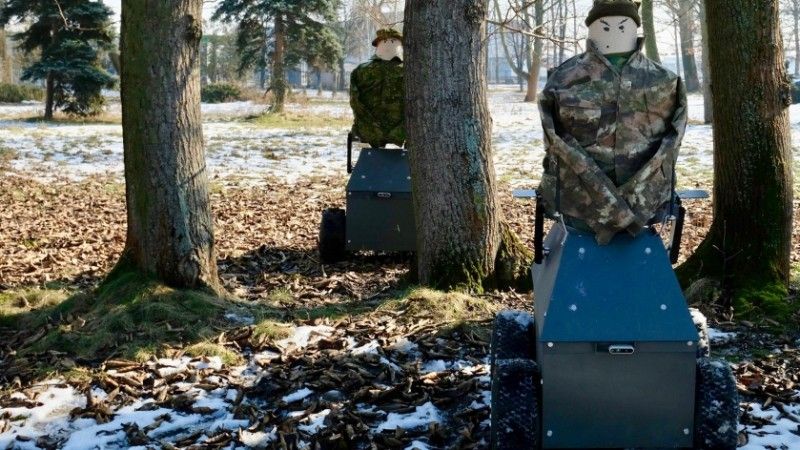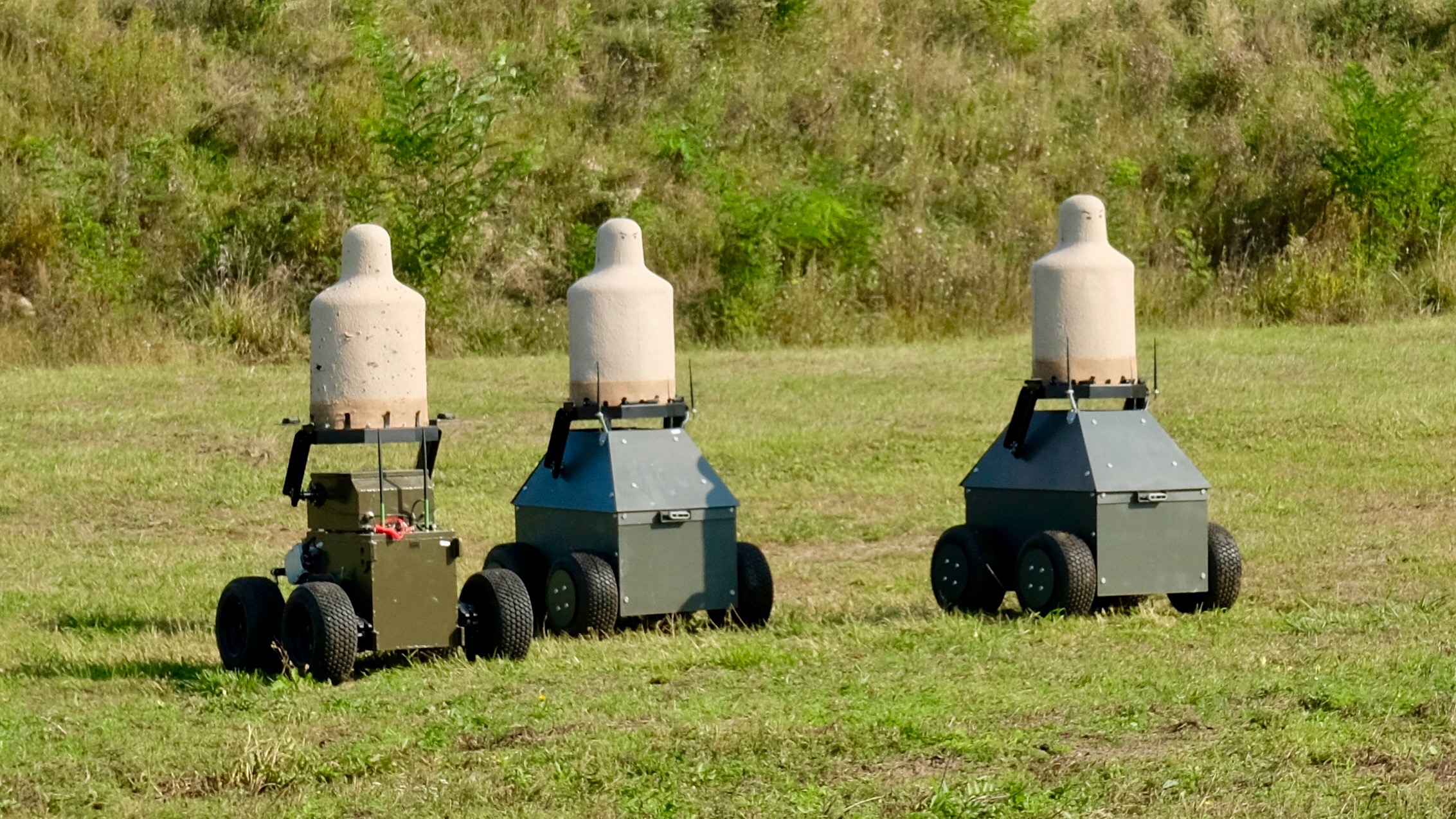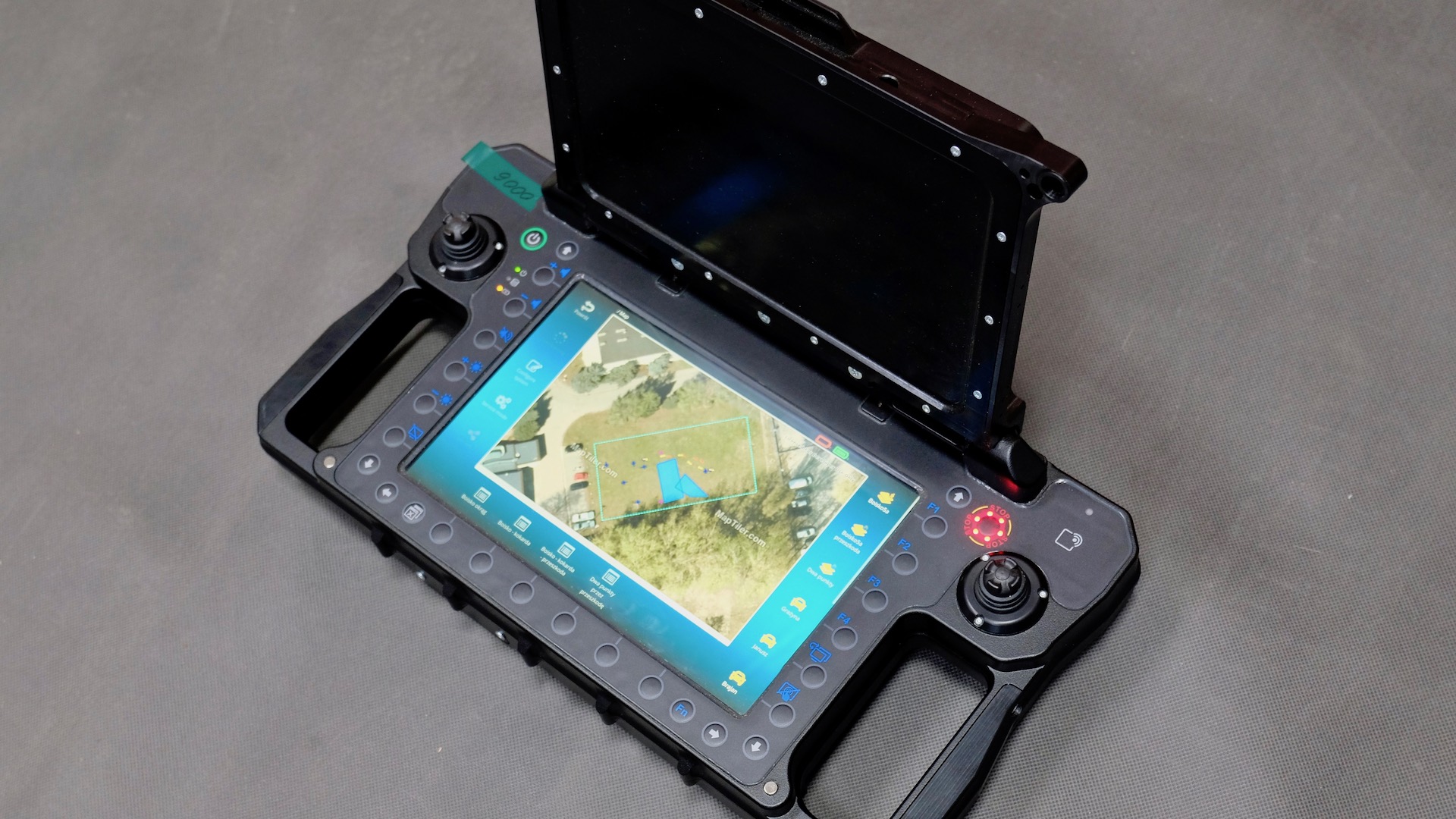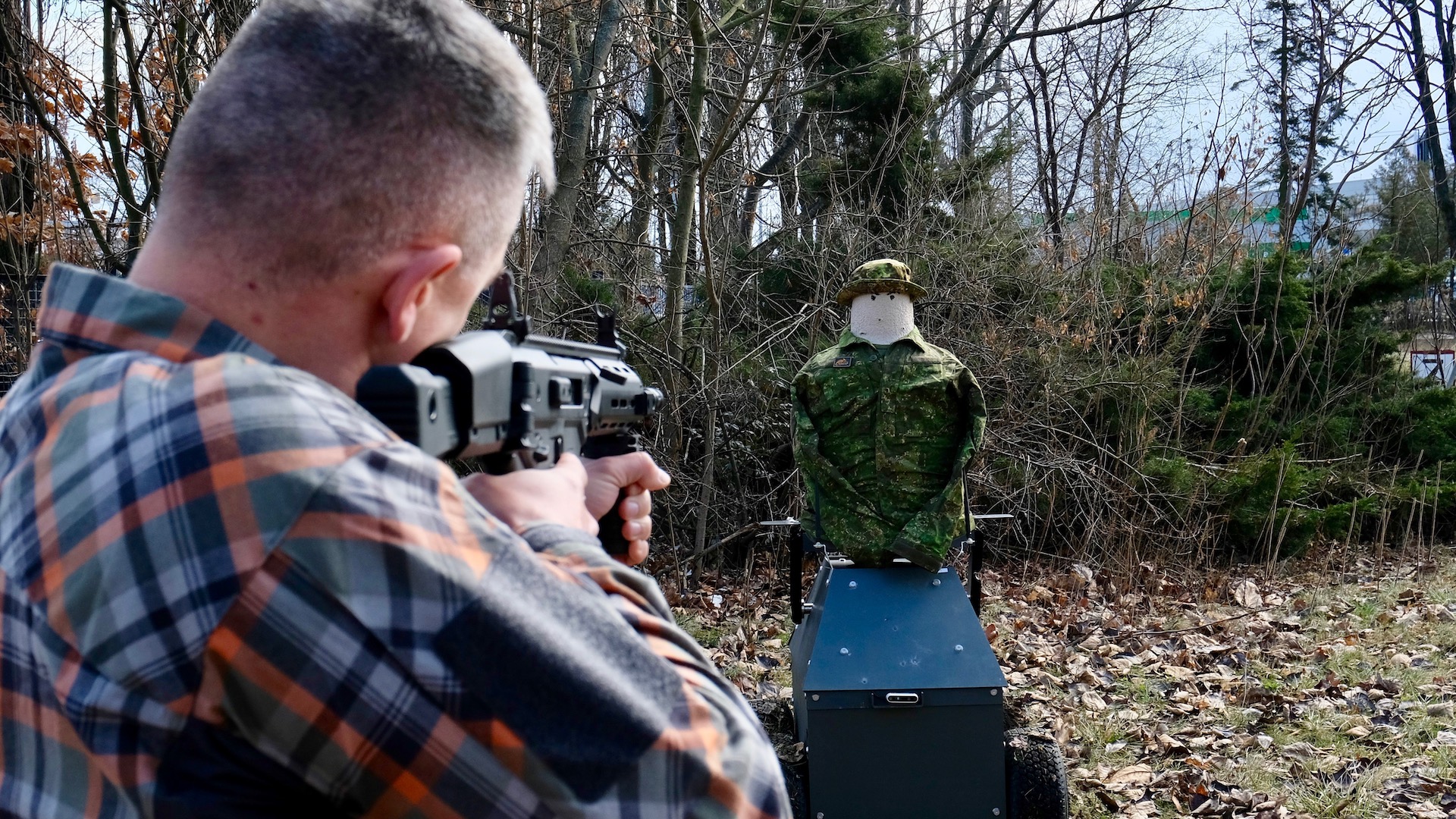Technology
PIAP Mobi Target - Advanced Shooting Training System

Smalls arms training activities involving soldiers or Police officers must be both quantitatively, as well as qualitatively sufficient. The above means that shooting static targets would not be enough, as engagements on the move, involving physical effort and stress are also an important part of the training. In some situations one needs to discriminate the threats among other targets - cooperation with the squad members also bears a critical meaning.
Advanced firearms training involving the aforelisted elements may be enhanced by simulation and training systems, dedicated for this purpose. Robotized mobile target systems can be listed among the interesting solutions that make it possible to differentiate the shooting scenarios and involve squad tactics training in ordinary shooting range activities. The robotized solutions listed above have advantages such as mobility, interactivity, as well as the ability to provide real-time feedback to the shooter. What’s even more important, employment of solutions as such does not necessarily translate into a need to carry out training infrastructure investment. One can also use systems as such in-field, or even at facilities without any technical infrastructure and utilities whatsoever.
PIAP Mobi Target is one of the available systems of this class. It is offered by the Łukasiewicz Research Network - Industrial Research Institute for Automation and Measurements - PIAP. Despite the fact that those who know similar solutions may associate it with equivalent systems offered by Marathon Target, the Polish offering shall not be perceived as a copy of the said product. Obviously, some solutions bear a certain degree of similarity, as all of the training systems as such, available on the market and designed for training are alike - they use armoured, robotized wheeled platforms transporting 3D mannequins resembling a human silhouette.
PIAP Mobi-Target is an original solution developed over the last 3 years by Łukasiewicz - PIAP (originating in 2017). The product has been designed within the framework of a project co-financed by the National Centre For Research and Development. During the said undertaking, the Institute made use of its broad expertise related to land robotic platforms. Some elements of the company’s portfolio (such as the operator’s panel) were used, alongside entirely new solutions (hit detection systems).
Mobi Target is easy to deploy at any shooting range/field training facility. There is no necessity to tailor the given facility for using the system, thus, no extra cost is involved. Furthermore, the targets are modular in design (this also applies to the armor plating). They feature an easily replaceable battery that is an original solution developed by PIAP.
The modular design makes the system scalable. Thus it can be easily tailored to the requirements and budget of the potential user. The civil customer or private shooting range may procure the simplest variant, with a remote control mobile target and operator’s station, excluding the autonomous mobility functions. Furthermore, mobile targets may be used without any armour plating, when protected by a berm and with the use of a contact target. A solution as such would diminish the cost of acquisition and further use.
PIAP Mobi Target system includes the mobile target platform, operator’s control panel with a training interface, and a relay station.
The manufacturer may also offer a vehicle that can transport the system and act as a control and maintenance center. The relay and the control panel are battery-powered, whereas the battery in the relay device cannot be replaced. In the case of the operator’s panel, a replaceable, commercial battery has been used.

As mentioned above, the mobile targets also utilize a dedicated, replaceable battery. The drive system utilizes four electric motors, one per wheel. Thanks to the above, the platform does not require any steering axles. The directional control is carried out thanks to the change of the speed and direction of wheel movements on one side of the platform.
The design of the mobile platforms makes the Mobi Target system suitable for outdoor ranges, they may be used in different weather conditions, at any time of day, or even at night. The wheeled traction system makes it possible to use the targets in smooth and moderately rough terrain conditions. There is no need to redesign the shooting range for them. The wheels are fitted with elastomer tires that are resistant to being shot. The suspension also ensures the proper stability of the target in rough terrain. Furthermore, a low center of gravity also enhances stability. This has been achieved thanks to the low position of the battery assembly.
The platform is 1700 mm high, 1000 mm long, and 900 mm wide. A single trainer system weighs 380 kilograms and offers endurance of 4 hours - depending on the training scenario.

The operator station is another relevant component of the system. It is used to control the system, design training scenarios, and supervise and observe the training activities. The user, when programming the training scenario, may define the target movement patterns: these may be controlled manually, follow a pre-planned route, or the movement may be autonomous, along a route defined by GPS waypoints.
The PIAP MobiTarget system’s autonomous capability is limited - the route is generated automatically, but it follows waypoints selected by the user. The system can also avoid obstacles the positions of which must be defined on a map. The above may be done with the use of Google Maps for instance.
The target may react to the hits in a variety of ways defined within a closed catalogue of scenarios developed by Łukasiewicz-PIAP. The target may lean over, or stop, for a certain period of time, after being hit. Furthermore, reactions to hits may be programmed depending on the hit area. What’s important within the scope of UX, the operator’s interface is clear and intuitive. This makes it easier to get acquainted with the operation of the whole system, and with the ways to handle and control it.
The training system may be switched to a manual mode at any given moment. The operator may manually control the given platform in a case as such. It is also possible for multiple operators to control multiple platforms, all at once.
PIAP Mobi Target’s modular design allows for easy expansion - the system may feature additional mobile targets, beyond its initial form. Up to 6 targets may be operated simultaneously.

The relay station is the last, yet important element of the solution developed by PIAP, providing stable communications between the operator and the mobile target, at the shooting range, or at the field training facility. The station is also responsible for supplying the operators with positioning data for each of the mobile platforms.
Using several relay units makes it possible to carry out training at long distances - up to 1,200 meters, thus making the system suitable for sniper training, or for long-distance competition shooting.
